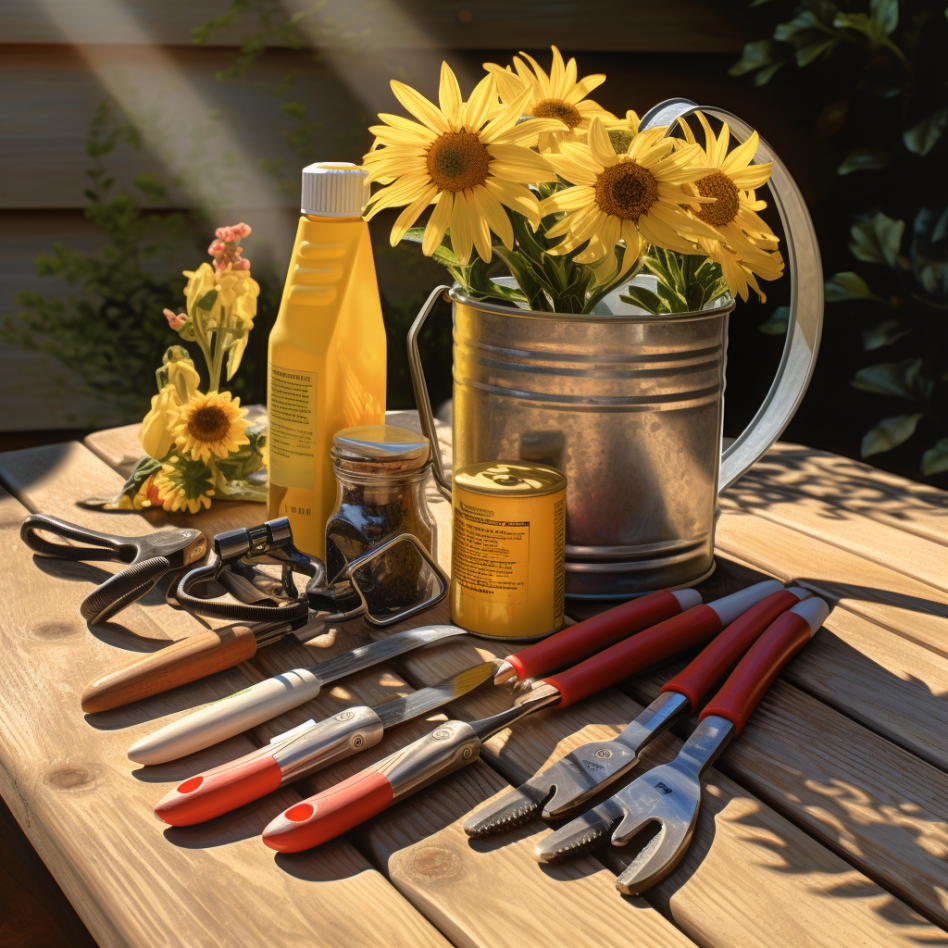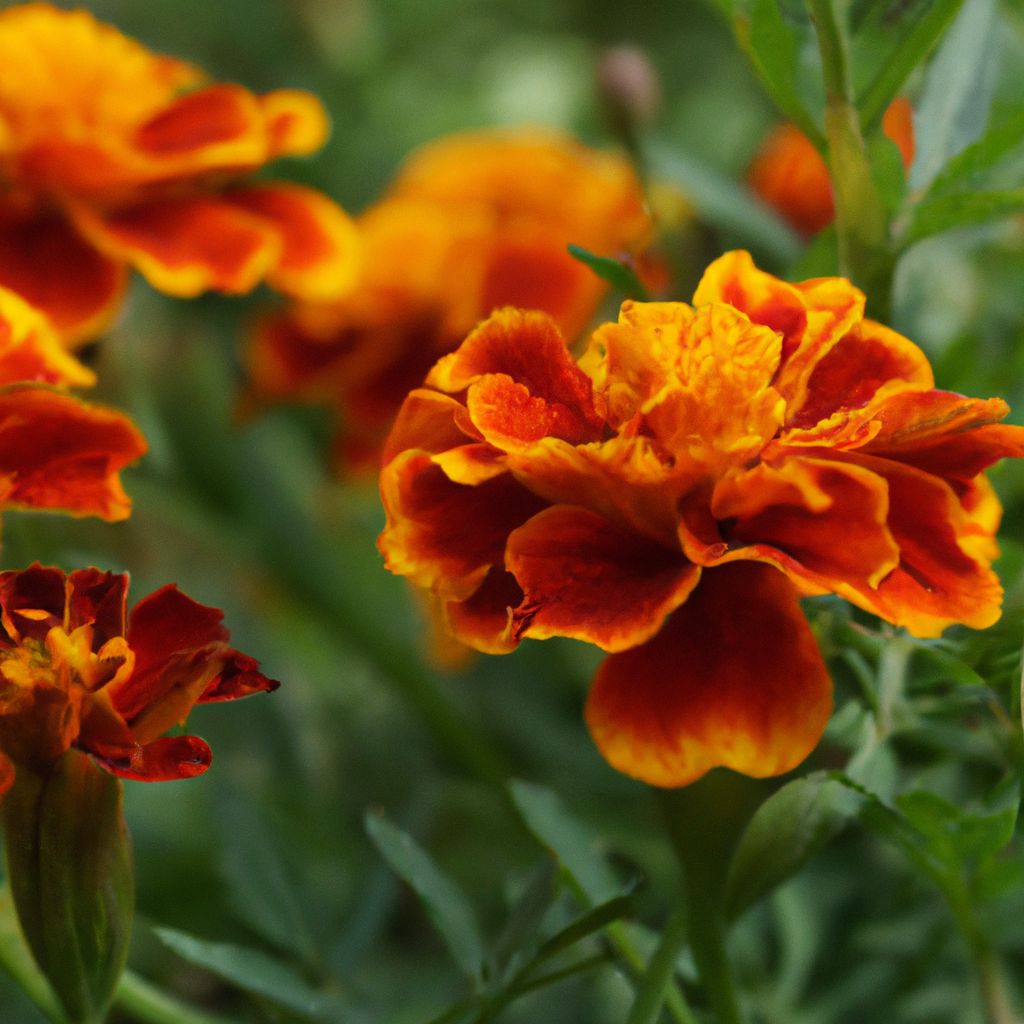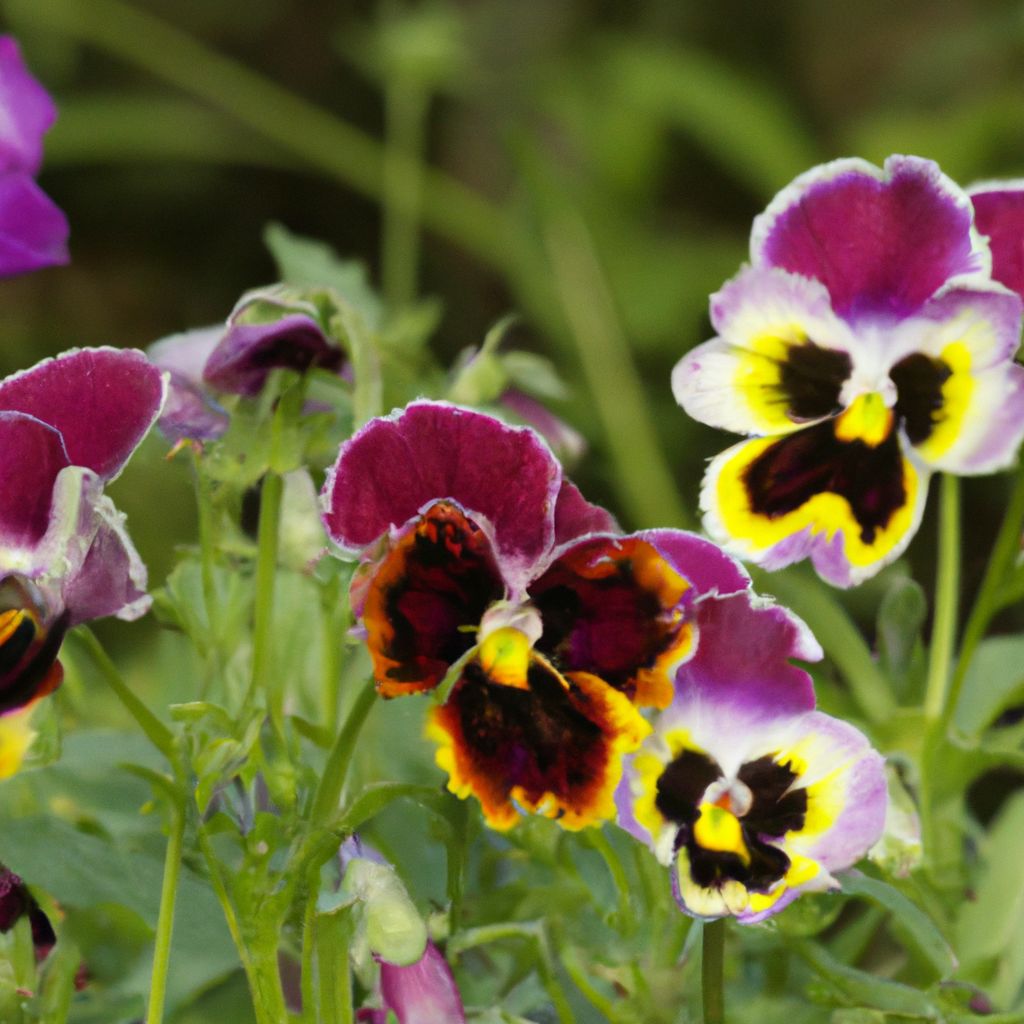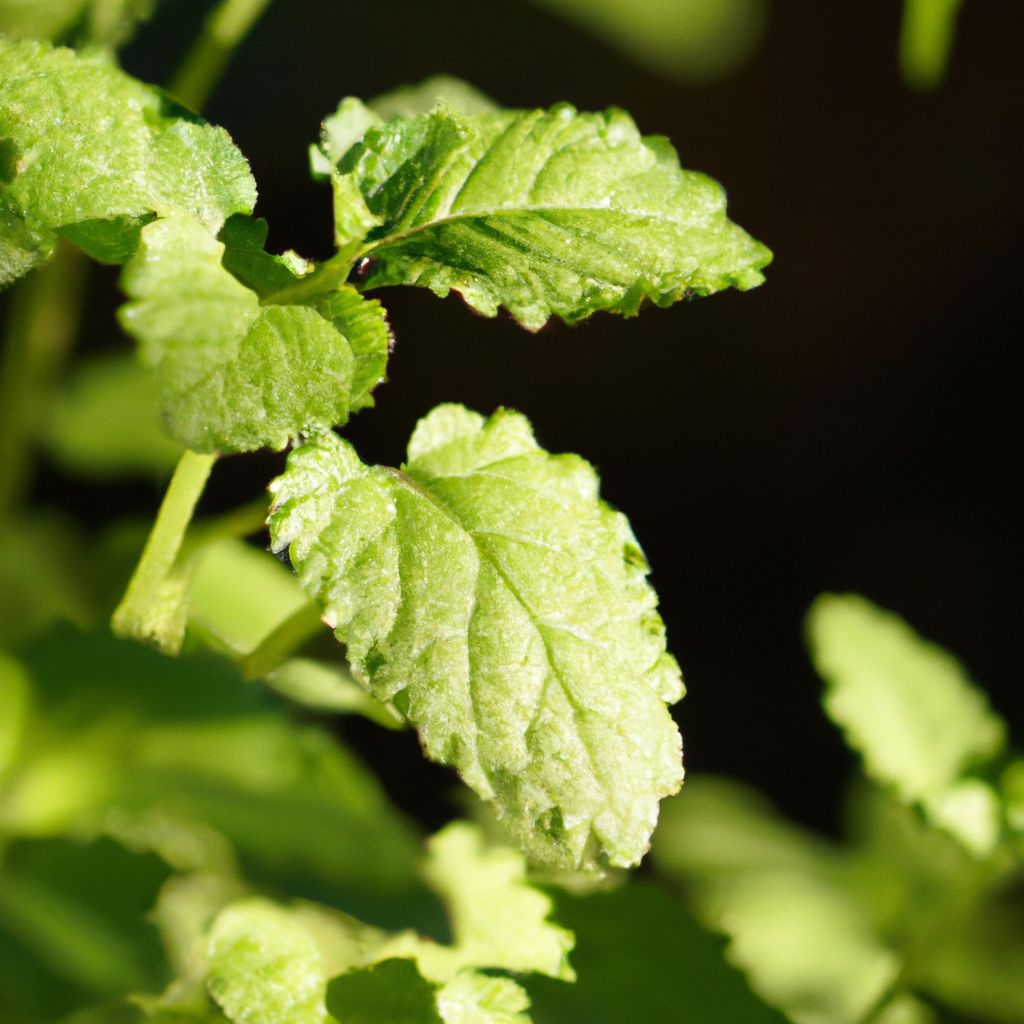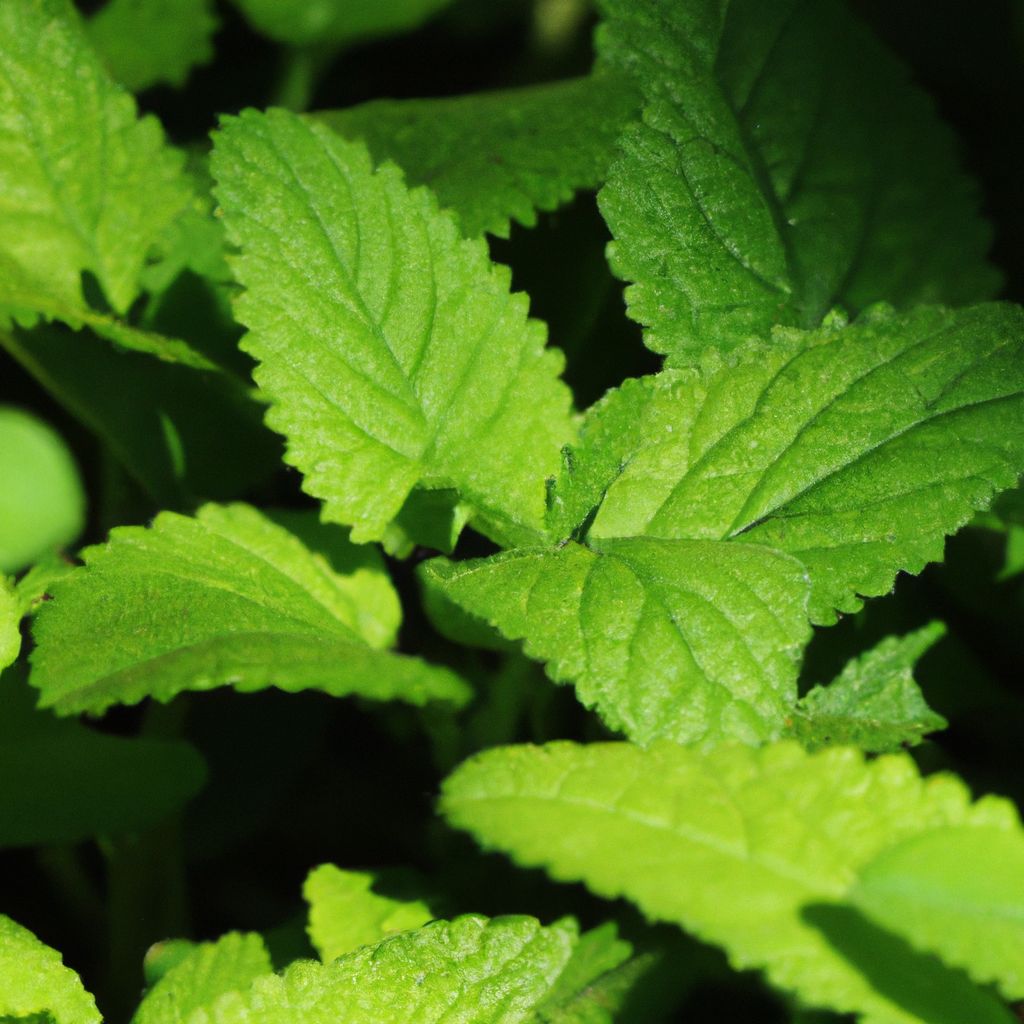Flower gardening is a popular hobby that provides immense joy and satisfaction to gardeners. However, growing beautiful blooms requires diligence and investing in the right tools for the job. Having high-quality essential gardening equipment makes caring for your flower gardening essentials and enhances the overall experience. In this comprehensive guide, we will explore some of the most important tools every flower gardening enthusiast should have in their collection.
Why Proper Tools Are Crucial for Flower Gardening
Proper tools are crucial for flower gardening because they provide several key benefits:
- Streamline tasks like digging, weeding, and pruning to save time and effort.
- Enable precision planting, transplanting, and detailed maintenance.
- Minimize plant damage through appropriate design for garden tasks.
- Contribute to overall plant health by facilitating proper care.
- Make jobs less laborious and more enjoyable for the gardener.
Investing in high-quality tools designed specifically for gardening protects your plants while making tasks efficient. When armed with the right equipment, flower gardening becomes less challenging and more rewarding.
Essential Hand Tools for Flower Beds
These compact, lightweight hand tools are designed for garden tasks that require precision and delicate handling. They are ideal for working in confined garden beds and provide detailed control over smaller-scale gardening jobs.
Gardening Gloves
Gardening gloves protect your hands from dirt, blisters, and thorns while also enhancing your grip. Look for gloves that offer:
- Breathable fabrics like cotton or microfiber
- Padded palms to reduce hand fatigue
- Flexible but durable construction
- Snug but comfortable fit
Gloves made from flexible materials provide dexterity, while durable fabrics withstand wear. Ensure gloves fit properly and are comfortable for extended wear.
Hand Trowel
A hand trowel is perfect for digging holes, turning soil, weeding, and transplanting seedlings. Choose a trowel with:
- A wide, triangular steel blade
- Sharp cutting edges
- A comfortable, ergonomic handle
- Durable all-metal construction
Opt for a trowel with a blade width suited to your hand size. High-carbon steel blades retain sharpness. Look for a rubberized handle for comfort and grip.
Pruning Shears
Pruning shears allow you to make clean, precise cuts on stems and branches to encourage healthy plant growth. Key features include:
- Ultra-sharp bypass blade
- Low-friction pivot mechanism
- Ergonomic handles with cushioned grips
- Rust-resistant high-carbon steel
Bypass shears make cleaner cuts than anvil types. Choose larger shears for thicker stems and branches. Always keep blades sharpened.
Watering Can
A watering can enables you to deliver water directly to the base of plants, avoiding wet foliage. Pick a can with:
- 2-3 gallon capacity
- Long, narrow spout
- Durable metal construction
- Ergonomic handle with padded grip
- Removable rose attachment
Look for a rose nozzle with variable settings for gentle watering or heavier spraying. Select a spout length to suit your plant sizes.
Garden Hoe
A garden hoe loosens and aerates soil and removes weeds between plants. Opt for a hoe with:
- A lightweight but strong head
- Beveled cutting edges
- A long handle for leverage
- Forward-angled head for weeding
- Ergonomic grip on handle
Look for solid one-piece construction. A light but sturdy head provides stamina. Choose hoe styles suited to your gardening tasks.
Garden Fork
A garden fork aerates and loosens compacted soil for improved drainage. Key features include:
- 4-5 curved steel tines
- Strong, lightweight head
- Long handle for two-handed use
- Forward-angled tines for leverage
- Comfortable, shock-absorbing grip
Look for solid sockets and welded joints. Opt for a fork suited to your strength and height. Use gentle leverage and avoid twisting.
Knee Pads
Knee pads provide protection and cushioning when kneeling during garden tasks. Look for:
- Soft EVA foam padding
- Non-slip exterior
- Secure adjustable straps
- Lightweight, breathable materials
- Patches for tool storage
For comfort, ensure knee pads fit properly and don’t slide. Take breaks when kneeling for long periods.

Larger Gardening Equipment
These long-handled tools are designed for efficient gardening over expanded areas. Their increased leverage makes preparing beds and maintaining gardens effortless.
Garden Shovel
A garden shovel digs holes for planting and transfers soil, compost, mulch, and gravel. Key features include:
- Pointed or rounded blade tip
- Forward-turned blade angle
- Cushioned grip on handle
- Step on back of blade for leverage
- Durable forged steel head
Select a blade shape suited to your needs. Look for a wide tread on the step plate. Choose appropriate handle length.
Garden Rake
A garden rake levels soil, clears debris, and prepares seed beds in flower gardens. Opt for a rake with:
- A wide rigid head
- 14-16 curved steel tines
- A bow-shaped tine pattern
- Cushioned handle for comfort
- Durable forged metal head
Select lighter rakes for gentle raking tasks. Look for strong tines that flex to follow contours. Avoid excessive downward pressure when raking.
Garden Hose
A garden hose provides a convenient water source for efficiently irrigating your flower beds. Key features include:
- Durable reinforced rubber or vinyl material
- Diameter suitable for water pressure
- Flexible, kink-resistant construction
- Solid brass fittings and couplings
- High-burst rating and leak protection
Choose larger diameter hoses for greater water flow. Look for crush-resistant models if driving over the hose. Always drain and neatly store the hose after use.
Planting Containers
Planting containers allow you to control soil quality, drainage, and display your flowers in portable planters. There are many types to choose from:
- Plastic containers: Affordable, extremely durable and lightweight. Good insulators to protect root systems. Can withstand extreme temperatures.
- Ceramic pots: Provide excellent drainage and allow air and water flow to plant roots. Weighty but attractive, produced in various shapes, glazes, and patterns.
- Wood containers: Offer a natural look and protect roots from temperature swings. Tend to be expensive and can deteriorate over time. Require sealing to prevent rotting.
- Hanging baskets: Allow displaying cascading or vine plants. Require frequent watering. Best for annuals. Match material to mounting location.
- Window boxes: Ideal for growing flowers in limited spaces near buildings. Should be weatherproof with drainage holes. Need to be securely installed.
- Metal containers: Durable, long-lasting option for large plants. Galvanized steel and aluminum resist rust. Tend to heat up rapidly in sun.
Consider sizes, shapes, materials, and features like self-watering reservoirs for low maintenance when selecting planting containers.
Plant Labels
Plant labels identify and organize the plants in your flower beds and gardens. Consider labels made from:
- Weatherproof plastic or stainless steel
- Wooden stakes or engraved zinc tags
- Chalkboard or mini-flag labels
Key labeling tips:
- Use permanent marker on plastic and metal labels
- Include plant name and variety along with planting date
- Note care details like sun or water requirements
- Mark perennials when dormant to avoid lost tags
- Place labels vertically just behind plants
Fertilizer
Fertilizer boosts nutrients in soil to aid flowering and plant growth. Organic fertilizer options include:
- Compost and aged manure
- Bone, blood, or cottonseed meals
- Worm castings and humus
- Alfalfa and kelp meals
- Granular organic mixes
For containers: Use a general organic fertilizer like 6-3-3 applied monthly.
For in-ground plants: Do a spring soil test to determine needs. Top dress beds with compost plus organic granular fertilizer.
Always follow package instructions carefully when applying fertilizer.
Mulch
Mulch retains soil moisture, prevents weeds, and regulates temperature. Organic mulches include:
- Shredded bark, leaves, straw
- Pine needles and wood chips
- Lawn clippings and hay
- Compost and manure
- Pebbles, gravel
Key mulching tips:
- Apply 2-3 inch layer around plants and beds
- Replenish as mulch breaks down
- Keep it away from trunks, stems, and foliage
- Use darker mulch to absorb more heat
Organic mulches improve soil structure as they decompose. Reapply annually.
Tools for Precision Pruning and Cutting
These specialized gardening tools allow you to prune and shape your plants with precision. Their sharp blades facilitate detailed trimming and cutting tasks.
Pruning Saw
A pruning saw easily cuts through thicker branches and stems. Features to look for include:
- Curved teeth with precision ground edges
- Aggressive tooth design
- Solid chrome-plated steel
- Ergonomic rubberized handle
- Blade length 6-8 inches
Use long even strokes when cutting. Sterilize the blades between plants. Sharpen periodically.
Garden Scissors
Garden scissors enable detailed pruning and cutting delicate plants and flowers. Key features:
- Ultra-sharp stainless steel blades
- Lightweight aluminum alloy body
- Comfort grip handles
- Blade notch to prevent jamming
- Locking mechanism for safety
Clean sharpened blades with disinfectant between plants. Use the right size scissors for each job.
Loppers
Loppers are ideal for cutting small branches and thick stems with their long handles and sharp blades. Look for:
- Carbon steel blades that are easy to sharpen
- Lightweight aluminum handles
- Shock-absorbing cushioned grips
- 1-1/2 inch cutting capacity
- Compound leverage system
Keep handles aligned as you make cuts. Store loppers properly to protect the blades. Apply protective oil regularly.
Essential Protective Garden Gear

The right protective clothing and accessories make gardening comfortable and safe. Key items include:
Gardening Gloves
Gloves shield hands from blisters, calluses, dirt, and debris. Key features:
- Flexible, breathable materials
- Reinforced palms and fingertips
- Snug but comfortable fit
- Machine washable
Look for abrasion-resistant fabrics like leather or microfiber. Change gloves once excessively dirty.
Garden Knee Pads
Knee pads cushion and protect knees during prolonged kneeling. Opt for:
- Soft EVA foam padding
- Non-slip exterior
- Adjustable straps for secure fit
- Lightweight and breathable
- Thicknesses for comfort
Take breaks and stretch when kneeling for long periods. Clean knee pads regularly.
Gardening Shoes
Sturdy footwear protects feet and provides traction on slippery or rough terrain. Look for:
- Waterproof materials
- Reinforced toe protection
- Thick, supportive soles
- High traction outsoles
- Quick-dry fabrics
Proper foot support and traction prevents slips and falls. Wipe shoes clean after gardening.
Gardening Hat
A hat shades your face, neck, and ears from the sun. Ideal features:
- Lightweight, breathable fabric
- Wide-brim for sun protection
- Moisture-wicking sweatband
- Chin strap for windy days
- Mesh panels for ventilation
A brim width of at least 3 inches is recommended. Treat hats with water repellent.
Safety Glasses
Protective eyewear prevents eye injuries from dirt, debris, and chemicals. Key features:
- Impact-resistant polycarbonate lenses
- 99-100% UV protection
- Anti-scratch/fog coatings
- Secure wrap-around arms
- Vented design to reduce fogging
Always wear eye protection when using power tools, fertilizers, or chemicals. Clean after each use.
Supplies for Easier Maintenance and Care
Specialized garden tools simplify maintenance tasks and promote plant health with minimal effort.
Watering Can
A watering can provides gentle, targeted watering to flower roots. Look for:
- 2-3 gallon capacity
- Long, narrow metal spout
- Removable rose nozzle
- Sturdy handle with grip
- Durable galvanized steel can
Water plants at soil level to avoid foliage diseases. Control water flow with spout and rose adjustments.
Garden Sprayer
A garden sprayer evenly distributes water, fertilizers, and pest control solutions. Key features:
- Durable plastic or stainless steel tank
- Carry strap for portability
- High-efficiency pump
- Interchangeable nozzles
- Large tank opening for cleaning
Follow all chemical directions and proper dilution. Rinse sprayer thoroughly after use.
Drop Spreader
A drop spreader evenly applies seed, fertilizer, and ice melt over beds and lawns. Look for:
- Heavy-duty plastic housing
- 10-15 inch spread width
- Deflector shields to control application
- Rotary agitator to prevent clogging
- Comfortable handle and precision flow control
Use an edge guard to keep application targeted to beds. Adjust settings for proper coverage.
Garden Cart
A garden cart lets you haul tools, soil, and plants with minimal exertion. Key features:
- Sturdy steel or plastic construction
- 10-15 cubic feet capacity
- 20 inch pneumatic wheels
- Folding design for storage
- Trays, hooks, and bins for organization
A convertible 2-wheel design easily navigates through narrow gates and paths. Avoid overloading the cart.
Garden Twine
Garden twine provides plant support and ties up growing stems. Look for:
- All-weather natural jute or synthetic twine
- Biodegradable for less cleanup
- Strong twist-free 200+ ft spools
- High tensile strength
Use short 8-12 inch pieces to tie plants to supports. Remove ties after plant establishment.

Structures for Vertical Growing
These structures support climbing plants and maximize space utilization in your garden.
Trellises
Freestanding or wall-mounted trellises provide support for vining plants to grow upward. Consider:
- Flexible nylon or metal grid trellises for lighter plants
- Sturdy wood or bamboo structures for heavy vines
- Arbors or pergolas for ornamental entryways
Anchor trellises properly in place. Encourage vines to grow through or wrap around the structure.
Plant Cages
Cages support and contain sprawling or tall plants like tomatoes and climbing flowers. Ideal features:
- Stackable circular cages
- Heavy-duty steel or plastic
- Grow-through mesh design
- 1-2 feet in diameter, 3-7 feet tall
Use extenders to increase height as plants grow. Secure cages in the ground or use stabilizing stakes.
Stakes and Poles
Single poles provide flexible vertical support for individual plants. Features:
- 1/2 – 1 inch diameter green bamboo stakes
- 5-7 foot garden poles with pointed tips
- Soft, pliable ties to secure plants
- Durable, decay-resistant materials
Drive stakes 6-12 inches into the ground near base of plants. Cross-brace poles that are very tall.
Final Thoughts
When it comes to flower gardening tools, improper or inadequate equipment can make tasks difficult and damage plants. Investing in high-quality essential tools designed specifically for gardening protects your plants while making jobs efficient and enjoyable for you as the gardener.
With this extensive guide detailing the most important flower gardening tools, you can make informed selections tailored to your specific needs. Properly equipping yourself with the essentials listed above will provide everything required to plant, grow, and maintain a beautiful flourishing flower garden that will thrive for years to come.











































